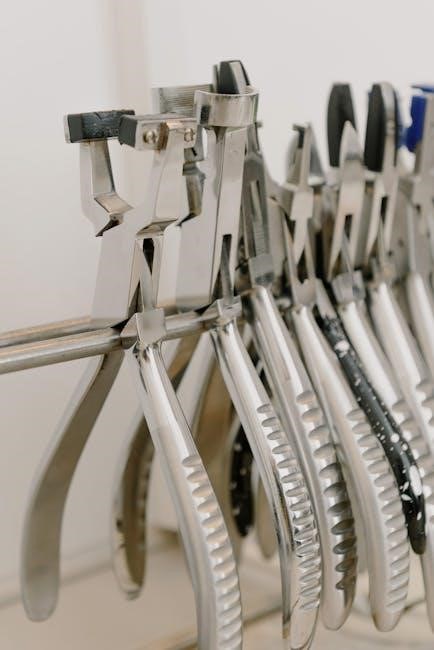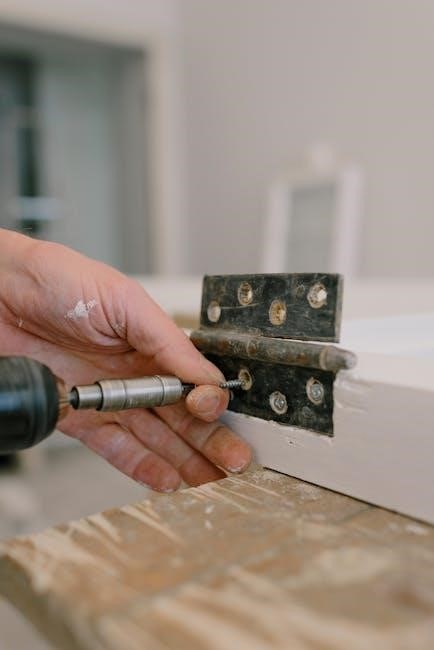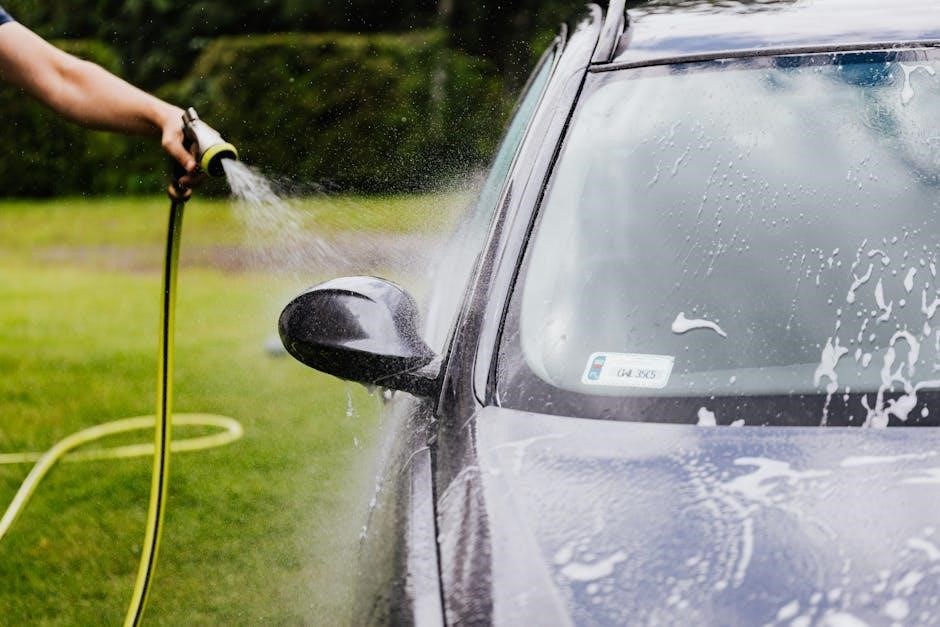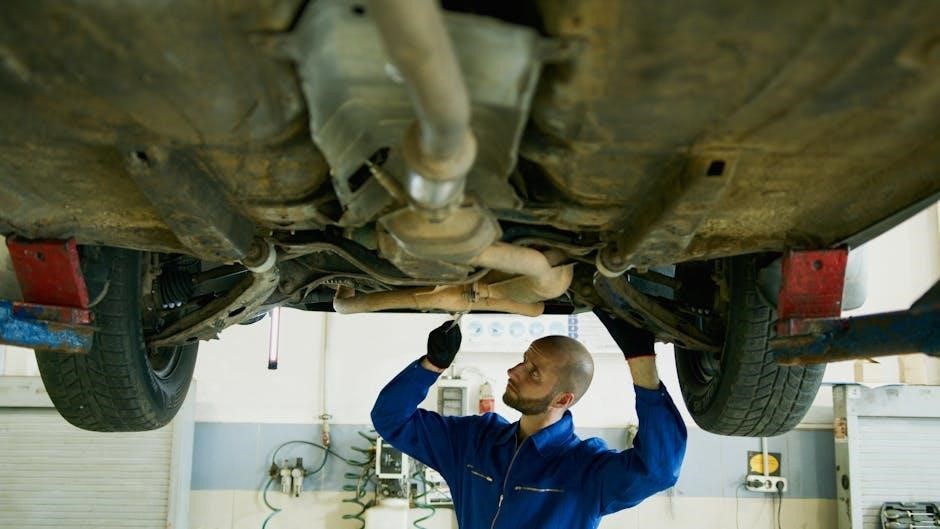The Cessna 100 Series Maintenance Manual provides essential procedures and guidelines for maintaining models up to 1963, including detailed spar repair procedures and serving as a guide for older models like the 120 and 140.
1.1 Scope and Purpose of the Manual
The Cessna 100 Series Maintenance Manual covers single-engine aircraft models up to 1963, including the 150, 172, 175, 180, and 185. It provides detailed procedures for ground handling, servicing, and maintenance, ensuring compliance with airworthiness standards. While primarily focused on 1963 and prior models, the manual also serves as a guide for maintaining older models like the 120, 140, and 170. Its purpose is to ensure safe and efficient aircraft operation through recommended practices.
1.2 Applicable Aircraft Models (1963 and Prior)
The manual applies to Cessna single-engine aircraft models 150, 172, 175, 180, and 185, with a focus on 1963 and prior models. It also provides relevant information for earlier models such as the 120, 140, and 170, ensuring comprehensive coverage of the Cessna 100 Series. This inclusivity makes it a valuable resource for maintaining a wide range of aircraft within the series, addressing their specific needs and ensuring compliance with maintenance standards.

Overview of the Cessna 100 Series Aircraft
The Cessna 100 Series encompasses a line of single-engine aircraft renowned for durability and reliability, featuring models like the 150, 172, and 180, designed for versatility and performance.
2.1 Models Covered (150, 172, 175, 180, 185)
The Cessna 100 Series includes the Model 150, known for its simplicity, and the Model 172, a popular trainer. The 175 offers a more powerful engine, while the 180 and 185 are heavy-duty versions designed for utility and performance. These models share common maintenance practices, making the manual applicable across the series. Each model’s unique features are addressed within the manual’s guidelines to ensure proper servicing and compliance with airworthiness standards.
2.2 Key Features and Design Elements
The Cessna 100 Series aircraft feature durable all-metal construction, with a focus on simplicity and reliability. Key design elements include a high-wing configuration for stability, tricycle landing gear for improved ground handling, and a robust spar system. These features contribute to the aircraft’s longevity and ease of maintenance. The manual emphasizes these design aspects to guide effective servicing and ensure the aircraft’s optimal performance and safety over time.

Structure of the Maintenance Manual
The manual is organized into clear sections, providing detailed procedures for inspections, repairs, and maintenance. It includes diagrams and charts for clarity and ease of reference.
3.1 Organization of the Manual
The Cessna 100 Series Maintenance Manual is systematically organized to ensure ease of use. It is divided into sections covering airframe, engine, avionics, and electrical systems. Each chapter includes detailed procedures, diagrams, and charts for specific tasks. The manual follows a logical flow, starting with routine inspections and progressing to complex overhauls. Cross-referencing is emphasized to help users quickly locate related information. This structure ensures that maintenance personnel can efficiently access the necessary guidance for any task.
3.2 Important Sections for Routine Maintenance
The manual highlights key sections for routine maintenance, such as pre-flight inspections, engine oil changes, and tire pressure checks. It emphasizes regular fuel system inspections and propeller condition checks. Additionally, it covers control surface lubrication and electrical system testing. These sections are designed to ensure aircraft safety and performance, with clear, step-by-step instructions for each task. Adhering to these routines is critical for maintaining airworthiness and preventing potential issues.

Ground Handling and Servicing
This section outlines procedures for safely handling the aircraft on the ground, including towing, parking, and securing. It also covers essential servicing tasks to ensure readiness for flight.
4.1 Pre-Flight Inspections and Checks
A thorough pre-flight inspection is critical to ensure the aircraft’s airworthiness. Check control surfaces for proper movement, inspect tires for wear, and verify brake functionality. Examine fluid levels, including oil and hydraulic systems. Ensure the propeller is free of damage and securely attached. Review cockpit instruments, avionics, and emergency equipment like fire extinguishers. Confirm all necessary documents, such as the aircraft registration and maintenance logs, are onboard. This process ensures a safe and efficient flight.
4.2 Fueling and Lubrication Procedures
Fueling and lubrication are essential for aircraft performance and longevity. Use approved aviation fuel, ensuring the correct type for your engine. Always follow safe fueling practices, such as grounding the aircraft and avoiding sparks. Lubricate moving parts like hinges, pulleys, and cables with aviation-grade grease. Check oil levels and top off as needed, adhering to the manual’s specifications. Inspect fuel lines and connections for leaks or damage before and after fueling.

Airworthiness Directives and Compliance
Airworthiness Directives ensure aircraft safety by addressing specific issues. Compliance is mandatory and critical for maintaining regulatory standards, as outlined in the manual.
5.1 Understanding Airworthiness Directives
Airworthiness Directives (ADs) are regulatory requirements issued by aviation authorities to address safety issues. They mandate inspections, modifications, or repairs to ensure continued airworthiness. ADs are legally enforceable and apply to specific aircraft models or components. For the Cessna 100 Series, ADs are issued by the FAA and other global aviation bodies to correct known design or operational flaws. Compliance is mandatory to maintain legal airworthiness and prevent grounding.
5.2 Specific ADs for the Cessna 100 Series
Several Airworthiness Directives apply specifically to the Cessna 100 Series. AD 2000-23-16 addresses wing spar cap inspections, while AD 2014-21-02 focuses on fuel tank venting issues. AD 2019-13-01 mandates inspections of the elevator control yoke. These directives ensure critical areas are evaluated and corrected to prevent potential failures. Compliance is essential to maintain safety and regulatory conformity, with detailed procedures outlined in the manual.

Maintenance Tasks and Schedules
This section outlines routine maintenance tasks, inspection intervals, and scheduled overhauls for the Cessna 100 Series, ensuring optimal aircraft performance and longevity through structured servicing plans.
6.1 Routine Maintenance Tasks
Routine maintenance tasks for the Cessna 100 Series include pre-flight inspections, engine oil and filter changes, tire pressure checks, and lubrication of moving parts. Regular cleaning of air filters, inspection of control surfaces, and verification of proper fastener torque specifications are also essential. Additionally, routine tasks involve checking hydraulic and brake systems, ensuring proper function of landing gear components, and monitoring corrosion prevention treatments. These tasks ensure safety and reliability, preventing potential issues before they escalate.
6.2 Scheduled Inspections and Overhauls
Scheduled inspections and overhauls are critical for maintaining the Cessna 100 Series aircraft. These include 50-hour and 100-hour inspections, focusing on engine, propeller, and electrical systems. Annual inspections involve detailed checks of control surfaces, landing gear, and hydraulic systems. Compliance with airworthiness directives ensures adherence to safety standards. Overhauls, such as engine and propeller replacements, are conducted at recommended intervals to maintain performance and reliability, preventing unexpected failures and ensuring continued airworthiness.

Repair and Modification Procedures
Repairs and modifications must follow FAA guidelines, using approved parts and techniques. All changes require proper documentation and testing to ensure airworthiness and safety standards.
7.1 Spar Repair and Replacement
Spar repair or replacement is critical for maintaining structural integrity. Inspections should be conducted using visual and non-destructive testing methods. Damaged spars must be replaced with FAA-approved parts. All repairs require detailed documentation and approval from certified personnel. Proper torque specifications and alignment are essential during installation. Refer to the manual for specific procedures and guidelines to ensure compliance with airworthiness standards. Improper repairs can lead to significant safety risks, making adherence to protocols paramount.
7.2 Other Structural Repairs and Modifications
Beyond spars, the manual covers repairs for wings, fuselage, and control surfaces. Inspections should include visual checks and non-destructive testing. Damaged components must be replaced with FAA-approved parts. Modifications, such as installing STCs, must adhere to manufacturer guidelines. Always consult the manual for specific procedures and ensure all work is documented and certified. Proper repair techniques prevent further damage and maintain airworthiness. Safety and compliance are paramount in all structural modifications.
Troubleshooting Common Issues
Troubleshooting involves identifying symptoms, such as engine performance issues or electrical malfunctions. Use diagnostic tools like multimeters and fault code readers. Always refer to the manual for specific procedures to ensure accurate diagnoses and effective repairs. Regular inspections and logbook analysis can help prevent recurring problems and maintain aircraft reliability. Prompt action is essential for safety.
8.1 Identifying and Diagnosing Problems
Identifying and diagnosing issues in the Cessna 100 Series involves systematic inspection of aircraft systems. Start with visual checks for wear or damage. Use diagnostic tools like multimeters for electrical systems and compression testers for engines. Consult the maintenance manual for specific procedures. Logbook analysis can reveal recurring problems. Always perform thorough pre-flight inspections to catch potential issues early. This proactive approach ensures safety and prevents minor problems from escalating.
8.2 Tools and Equipment for Troubleshooting
Essential tools for troubleshooting include multimeters, compression testers, and hydraulic test kits. Pneumatic leak-down testers are crucial for engine cylinder inspections. Specialized tools like rivet guns and sheet metal shears are needed for structural repairs. Ensure all equipment is calibrated and meets manufacturer standards. Consult the manual for specific tool requirements. Sources include official Cessna distributors or reputable aviation suppliers. Proper tools ensure accurate diagnoses and effective repairs, maintaining aircraft safety and performance.
Specialized Tools and Equipment
Specialized tools, like Cessna-specific wrenches and diagnostic instruments, are essential for precise maintenance. Calibration ensures accuracy, and sourcing from authorized suppliers guarantees compatibility and reliability for aircraft safety.
9.1 Required Tools for Maintenance
The Cessna 100 Series requires specific tools for maintenance, such as wrenches, screwdrivers, and pliers. Diagnostic tools like compression testers and fuel system testers are essential. Precision instruments, including torque wrenches and rivet guns, ensure proper repairs. These tools are designed for Cessna-specific components, like landing gear and engine mounts. Using the correct tools prevents damage and ensures safety. They are critical for tasks ranging from routine inspections to complex overhauls, adhering to manufacturer standards for reliability and compliance.
9.2 Sources for Specialized Equipment
Specialized tools and equipment for Cessna 100 Series maintenance can be sourced from authorized Cessna parts suppliers, aviation tool distributors, or reputable aircraft maintenance organizations. Online retailers like Aircraft Spruce and Specialty Tools also offer a range of specific tools; Additionally, local aviation repair shops may carry or order specialized equipment. Always consult the Cessna parts catalog or authorized distributors to ensure compliance with manufacturer specifications and maintenance standards.

Modifications and Upgrades
Modifications and upgrades for the Cessna 100 Series include performance enhancements, avionics upgrades, and structural improvements. Ensure all changes comply with FAA regulations and are documented properly.
10.1 Approved Modifications and STCs
Approved modifications for the Cessna 100 Series are outlined in Supplemental Type Certificates (STCs). Common upgrades include avionics improvements, engine modifications, and structural enhancements. STCs ensure compliance with FAA regulations, providing a legal framework for alterations. Examples include Garmin G1000 avionics installations, engine performance upgrades, and wingtip extensions. Always consult the FAA and STC holders for specific approval details to maintain airworthiness and safety standards.
10.2 Performance Enhancements
Performance enhancements for the Cessna 100 Series focus on improving speed, fuel efficiency, and payload capacity. Popular upgrades include engine modifications, such as STC’d powerplant upgrades, and aerodynamic improvements like wingtip extensions. Lightweight interior options and optimized propeller configurations also contribute to enhanced performance. These modifications must align with FAA guidelines and be documented in the aircraft’s maintenance records to ensure compliance and maintain airworthiness standards.

Safety Practices and Precautions
Ensure adherence to safety practices during maintenance, including proper tool usage, protective gear, and fire safety measures. Always follow FAA regulations and manufacturer guidelines to minimize risks.
11.1 General Safety Guidelines
Always wear proper personal protective equipment (PPE), including safety glasses and gloves, during maintenance tasks. Ensure the aircraft is securely tied down and brakes are applied. Use approved tools and follow correct procedures to avoid damage or injury. Keep work areas clean and well-lit to prevent accidents. Be aware of fire hazards and keep extinguishers nearby. Follow lockout/tagout procedures for systems being serviced. Ensure good ventilation when using chemicals. Regular training and adherence to safety protocols are essential for maintaining a safe working environment.
11.2 Emergency Procedures
Always have a fire extinguisher nearby and know its proper use. Familiarize yourself with aircraft emergency exits and systems. In case of fuel or hydraulic spills, contain the area immediately. Keep emergency contact numbers accessible. Regularly inspect emergency equipment like first aid kits and fire extinguishers. Be prepared to evacuate the area if hazardous conditions arise. Follow established protocols for incidents involving electrical or structural damage. Training in emergency response is crucial for maintaining safety during maintenance operations.
Importance of Adhering to the Manual
Adhering to the manual ensures compliance with safety standards, prevents mechanical failures, and maintains aircraft airworthiness, guaranteeing reliable performance and protecting both the aircraft and occupants.
12.1 Compliance with Maintenance Procedures
Compliance with maintenance procedures is critical for ensuring the airworthiness and safety of the Cessna 100 Series aircraft. Adhering to the manual’s guidelines guarantees that all maintenance tasks are performed correctly, reducing the risk of mechanical failures. Proper compliance also ensures that the aircraft meets regulatory standards, maintaining its certification and operational integrity. Deviations from prescribed procedures can lead to unsafe conditions, highlighting the importance of strict adherence to the manual’s instructions.
12.2 Consequences of Non-Compliance
Non-compliance with maintenance procedures can lead to severe consequences, including mechanical failures, accidents, and loss of aircraft certification. Regulatory penalties, legal liabilities, and increased insurance costs may result from non-adherence. Additionally, non-compliance can compromise safety, endangering lives and damaging the aircraft’s integrity. It is imperative to follow established protocols to avoid these risks and ensure continued airworthiness and operational safety of the Cessna 100 Series aircraft.
Common Maintenance Challenges
Spar cap repairs, corrosion in older models, and sourcing rare parts are common challenges. These issues require specialized skills and resources to address effectively.
13.1 Spar Cap Repairs and Replacement
Spar cap repairs and replacements are critical due to their structural importance. Damage detection requires thorough inspections and advanced testing. Replacement involves precise removal and installation of new caps, ensuring alignment and strength. Compliance with airworthiness directives and manufacturer guidelines is essential. Specialized tools and skilled technicians are often required to maintain airworthiness and safety standards. Regular inspections and proactive maintenance can prevent costly repairs and ensure long-term reliability.
13.2 Other Frequently Encountered Issues
Beyond spar cap repairs, common challenges include landing gear malfunctions, engine component wear, and avionics system failures. Corrosion in older models is prevalent, particularly in wing and fuselage areas. Electrical system glitches and fuel leaks are also frequent issues. Addressing these problems requires meticulous inspections and adherence to maintenance schedules. Proper tools and technician expertise are essential to resolve these issues effectively and ensure continued airworthiness and safety of the aircraft.

Documentation and Record-Keeping
Maintaining accurate service records and logbooks is crucial for compliance and accountability. Detailed documentation ensures traceability of maintenance actions and supports airworthiness certification requirements.
14.1 Maintaining Service Records
Accurate and detailed service records are essential for tracking maintenance activities. They include dates, procedures performed, and materials used, ensuring compliance with aviation regulations. These records provide a clear history of the aircraft’s condition, aiding in traceability and accountability. Proper documentation also supports airworthiness certification and facilitates future maintenance planning. Incomplete or inaccurate records can lead to compliance issues and operational delays. Regular audits ensure adherence to standards, while digital tools enhance record-keeping efficiency and accessibility.
14.2 Logbook Entries and Compliance
Logbook entries are critical for documenting maintenance activities and ensuring regulatory compliance. Each entry must include the date, description of work, technician signature, and compliance statement. This ensures traceability and accountability. Digital logbooks are increasingly used, offering enhanced organization and accessibility. Accurate and timely entries help verify airworthiness and support compliance audits. Proper logbook maintenance is a legal requirement, safeguarding operational integrity and adherence to aviation standards.
Proper maintenance ensures safety, reliability, and longevity of the Cessna 100 Series aircraft. Adherence to the manual is crucial for compliance and optimal performance. Stay informed and vigilant.
15.1 Summary of Key Points
Compliance with the Cessna 100 Series Maintenance Manual is the cornerstone of ensuring aircraft safety and reliability. Regular inspections, adherence to airworthiness directives, and the use of proper tools are essential. Proper documentation and record-keeping are vital for tracking maintenance history and ensuring compliance; By following the manual, technicians can address common challenges effectively, such as spar cap repairs, and implement approved modifications to enhance performance. Consistent adherence ensures the aircraft remains airworthy and operates efficiently.
15.2 Final Thoughts on Effective Maintenance
Effective maintenance of the Cessna 100 Series requires a proactive approach, combining adherence to the manual with meticulous attention to detail. Regular inspections, timely repairs, and proper documentation ensure safety and longevity. Staying informed about airworthiness directives and utilizing specialized tools enhances maintenance efficiency. By prioritizing compliance and best practices, technicians can uphold the aircraft’s performance and reliability, safeguarding both the aircraft and its occupants.
